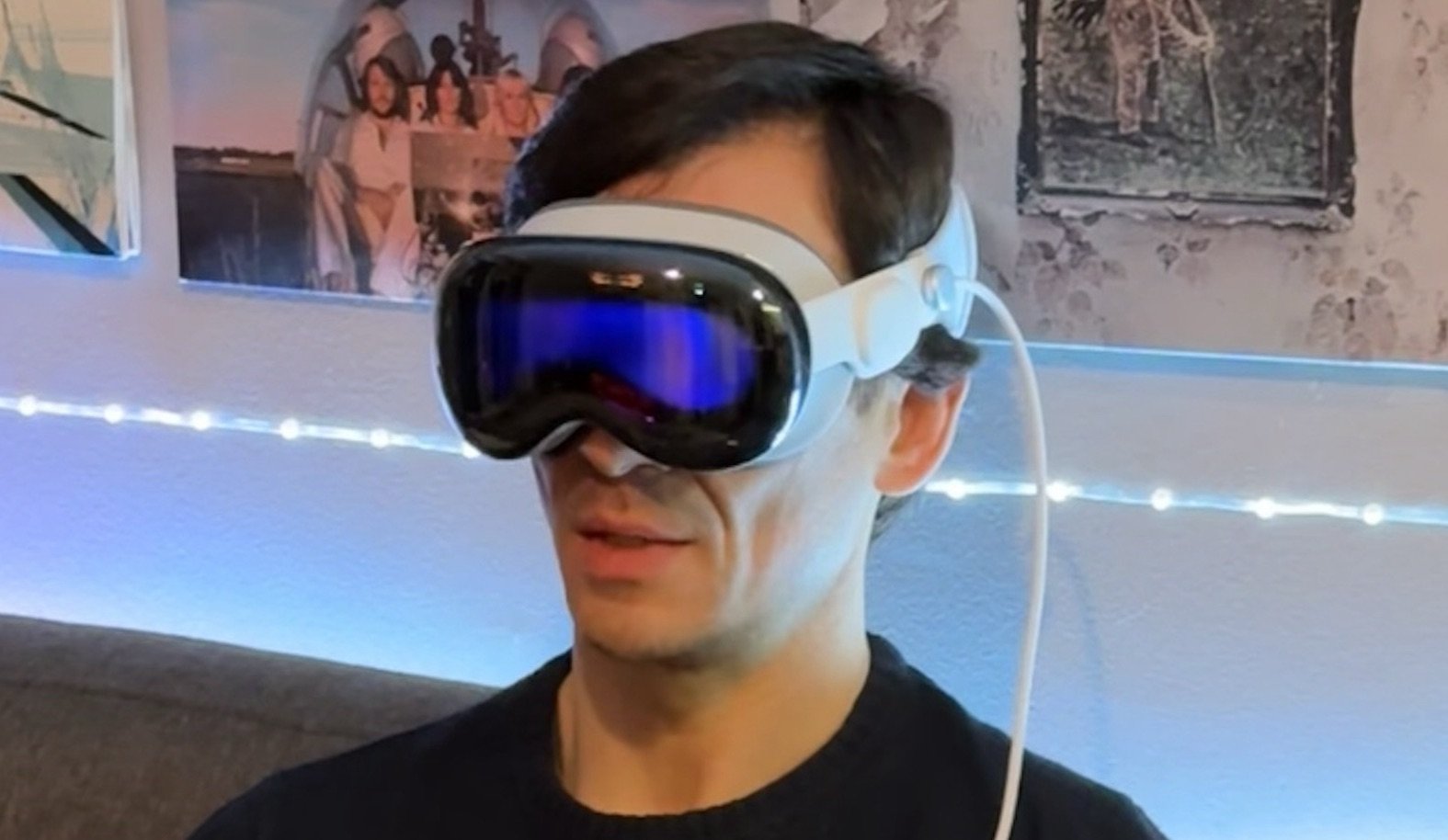My first impressions with the Vision Pro
Last night I was lucky enough to try a Vision Pro for the first time and it was very cool. It reminded of the rare moments when a piece of tech changed some part of my life. Getting my first laptop let me use a computer on a couch, my first MP3 player let me take music anywhere, Flickr to share my photos, Twitter to my share my thoughts. The Vision Pro feels like that level of change and excitement — the geek energy is high!
Below are a few thoughts as a geek but also as a product person interested in the trajectory of this particular device and this type of computer in daily life. In a word, it was surprising, and overall it was both better and worse than I expected.
Let’s get into it.
Briefly on screens and weight
I don't want to spend much time on these because they’ll improve quickly over time but they do deserve a mention. For pass-through video (where you can see your room with the headset on), the quality was bad. The moment I put the headset on I knew I was looking at screens. The image was softer and there was significant blurring when I moved my head — I was shocked because the early demoers said you couldn’t tell at all. My room conditions were likely the cause because it wasn’t a brightly lit room, but it was a regular room with all the lights on and probably typical conditions for people using the Vision Pro.
The other factor I noticed quickly was the weight. The Vision Pro does feel heavy, and gets warm on your face, and I’d find it challenging getting through a 2hr movie. After about 15min I started to feel it and by 30min I’d had enough. But both pass-through and weight will quickly get better so they’re not worth dwelling on unless you're planning to buy one this 1st generation.
Productivity
In a post from launch day, I said the “laptop was undefeated” and the Vision Pro would not be a replacement for it, and I'm even more convinced of that now. I also said it would hold a similar role as an iPad does today — for light productivity and occasional unique experiences — and I still believe that’s also true. But I did have some truly incredible productivity experiences last night.
The first time you see an app floating in your room is really cool. The windows look and feel real, and you want to touch them. Resizing them is also a trip. It’s impossible not to smile at the ridiculousness of seeing your email 10ft tall, like you broke into a movie theatre to send off a few messages.
The spell breaks a little when you put more than a couple windows in the room at the same time. The windows are not just in 3D space, they also have rotation, so each window is not only a different size, distance, and height, but also angle. All this makes for a feeling of clutter that made me spend too much time organizing windows. There was even a sense of foreboding from these windows as they loomed over me like a hovering boss.
That said, I had one experience that was only possible on the Vision Pro. I'm a fan of infinite canvas apps — the kind where you put up Post-Its, flowcharts, draw, etc. — and Apple's version of that called Freeform is preinstalled on the Vision Pro. The excitement I felt seeing a huge board of notes and diagrams the size of a wall betrayed my nerdiness. To stand back and take in so much information in one field of view is something we can’t do today. All our notes apps usually have a list on the left and a preview window on the right and you can only see a dozen notes at any time. With the Vision Pro, you can imagine a totally different interface for notes. The old way is like flying a small plane low to the ground; the Vision Pro is like being in a space shuttle orbiting Earth. I'm very excited for what notes, photos, and analytics apps do with canvases this large.
A word on the hand-gesture interaction model. When the Vision Pro was announced, I thought my dream of consumer-level cursor control with eyes was finally here — i.e. working at the speed of sight. I've long played around with accessibility settings on my computers, including cursor movement with head tracking. It was useful but slow and left you wishing for more speed and precision. From the early demo praises about the Vision Pro, it sounded like the eye-tracking dream was here but that wasn't the case. The eye-tracking on the Vision Pro is decent but far from great. There are a lot of false positive clicks and gestures and the UI doesn’t always respond when you look at it. Many times I had to look away and look back to a button for it to recognize — it seems glaring at buttons doesn’t work. It's perfectly fine for navigating through menus to start a movie, but any apps that require ongoing interaction (e.g. work apps) is frustrating. I can see myself using it to give my hands a break, but I can’t see it being a replacement for a keyboard and mouse.
Entertainment
Where the Vision Pro really shines is sit-back experiences. When you go fully immersed (zero passthrough) and watch a video, the quality gets significantly better. And when you try a fully digital experience — like the dinosaurs in the demo created entirely with computer graphics — it feels real! My reptilian brain was fooled. That dinosaur coming through the screen and sniffing at me (presumably to see if I was worth eating) was genuinely unsettling. The prehistoric fear centers in my brain were screaming and I considered turning it off. The only thing that carried me through was Apple’s promise of family friendly experiences.
Another immersive video that tricked my brain was a 360° movie of a woman tightrope walking across a canyon. As I watched her, I looked down from the ledge and at at the sight of thousand foot drop, felt myself grabbing the sides of the couch. These are the classic VR experiences and the Vision Pro delivers them better than any other device. Even sitting still in one of the predefined scenes, on a lake for example, is really nice. I could see myself dropping in there a couple times a day with some nice music and taking a break.
Final thoughts
After trying the Vision Pro firsthand, I can say a few things with more certainty. This will be a peripheral device in peoples’ lives — the iPad alongside a laptop. I can’t see this as an all-day productivity machine . The windows and hand gesturing are fundamentally not conducive to long stretches of work. That said, there are clearly some phenomenally compelling work use cases that’ll make this a valuable tool.
For entertainment, it’s incredible. The image quality and interaction model are where they need to be to make watching regular videos cool and the immersive experiences mind-blowing. With more content and a lighter weight, everyone will want one of these.
For all use cases though, the biggest hurdle is price. At $3500 it's hard to justify a peripheral device that’s not work-related. The price will come down but how much and how fast?
With all these factors considered, it’s possible Meta’s approach with their Quest headsets — starting at the low-end of the market and focusing mainly on entertainment — might actually be the better approach.

